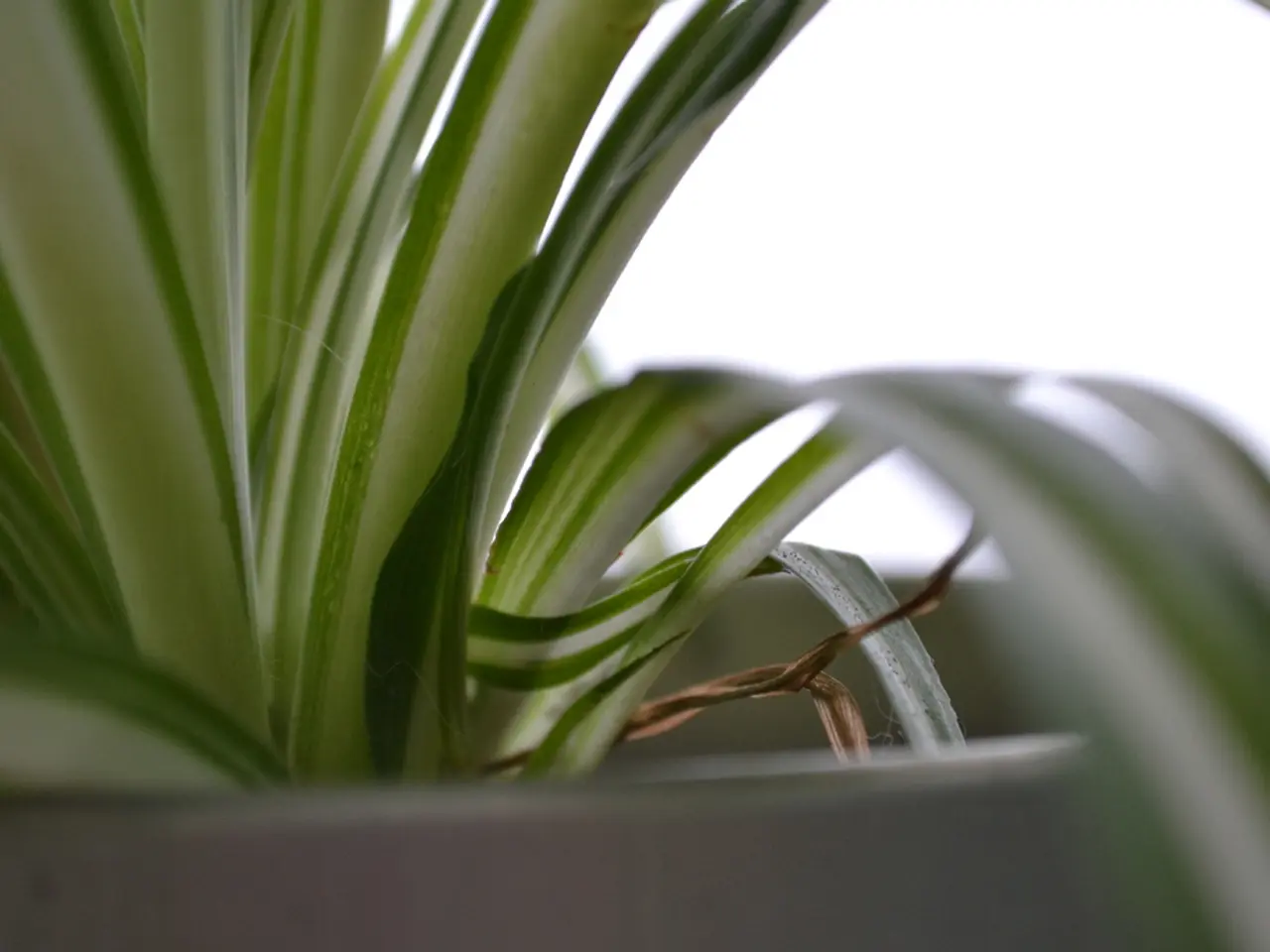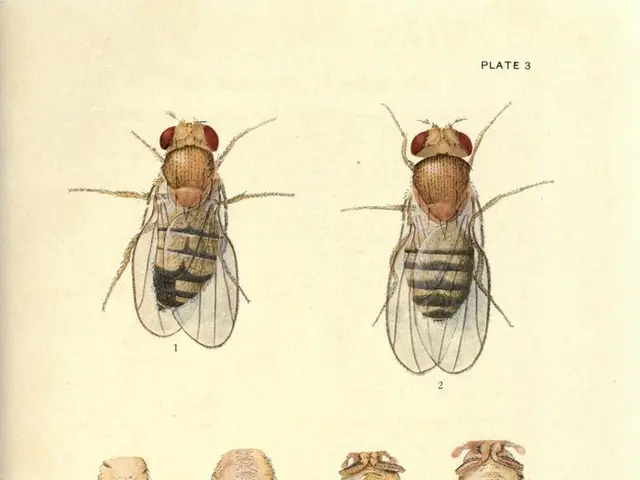Misterious White Phenomena in Soil: Identifying Those Spotty Afflictions in Plants
White spots on plant leaves and soil can be a cause for concern for any gardener. In this article, we delve into the various reasons behind these white spots and provide tips for prevention and treatment.
Bacterial blight and fungal infections such as powdery mildew and leaf mold are common culprits. Powdery mildew, characterised by white, powdery patches on the tops of leaves, thrives in warm, humid conditions with poor air circulation. Leaf mold, caused by the fungus Passalora fulva, often appears as pale green or yellowish spots that turn yellow and develop a gray, velvety growth underneath, especially on leaves near the soil where humidity is high.
White spots from hard water are mineral deposits left on leaves when plants are sprayed or watered with mineral-rich water. Insects like whiteflies, spider mites, cottony cushion scale insects, and mealybugs can also cause white spots. These pests feed on plants, leaving behind cottony masses or tiny white specks, mainly on the undersides of leaves.
To manage these issues, it's essential to practice good sanitation, proper watering techniques, and improve air circulation between plants. For powdery mildew, a home remedy is spraying a mixture of baking soda and liquid soap diluted in water once a week. For insect infestations, using neem oil, insecticidal soap, or introducing beneficial insects such as ladybugs can help. Fungicides can control fungal diseases like leaf mold.
Preventing hard water spots on leaves involves using filtered or distilled water for misting and watering, or wiping leaves regularly to remove mineral buildup. Keeping soil healthy and well-drained also reduces fungal infections appearing on soil surfaces.
Nutritional deficiencies can also cause white spots on leaves. For instance, zinc deficiency affects the newest leaves, causing interveinal chlorosis, where the leaf turns yellow while the veins remain green. Molybdenum deficiency commonly affects the lower, older leaves, causing them to turn yellow at the edges. Magnesium deficiency often affects the lower, older leaves, causing chlorosis between the leaf veins. Potassium deficiency may manifest as brown or burnt-looking leaf edges and tips, with chlorosis between leaf veins, and purple spots on the underside of leaves. Manganese deficiency causes interveinal chlorosis in younger leaves, where the leaf turns pale or yellow while the veins and edges remain green.
Crop residue should be cleared to reduce fungal spores in soil, and rotating crops helps prevent disease recurrence. Soil depth is an important factor for healthy pineapple guava plants, with the ideal depth being 12-24 inches.
Iron deficiency typically affects younger leaves, causing them to turn pale or yellow while the veins remain dark. Calcium deficiency affects newer leaves and growing points, resulting in stunted, twisted, or withered growth, and tip burn. Boron deficiency affects roots and shoots, causing thick, short roots with swollen tips, and stunted, deformed growth. Phosphorus deficiency can cause older leaves to turn dark green with a purple, bronze, or red tinge, and if left untreated, leaves may develop brown spots and necrosis.
Botrytis blight affects flower petals and buds, causing them to decay and rot, often with signs of fuzzy, grey mould. Rust is a fungal infection that develops on the undersides of leaves and spreads with the help of wind, water, and insects.
Whiteflies are tiny, winged insects that cluster under leaves and are often revealed when the plant is shaken. Spider mites are tiny, winged insects covered in a waxy, white powder and reproduce quickly. Both pests can cause significant damage to plants.
In summary, white spots on plant leaves and soil are usually due to fungi, pests, or mineral deposits, and can be effectively managed through sanitation, proper watering techniques, air circulation, and targeted treatments. Regularly checking your plants for signs of disease or pest infestations can help catch issues early and ensure a healthy, thriving garden.
Home-and-garden enthusiasts may encounter white spots on plant leaves and soil, which could be due to various factors such as bacterial blight, fungal infections like powdery mildew or leaf mold, or mineral deposits from hard water. To maintain optimal lifestyle and garden health, it's crucial to identify the cause and implement appropriate measures, such as improving air circulation, employing good sanitation practices, and using treatments like neem oil for pests or fungicides for fungal diseases.




